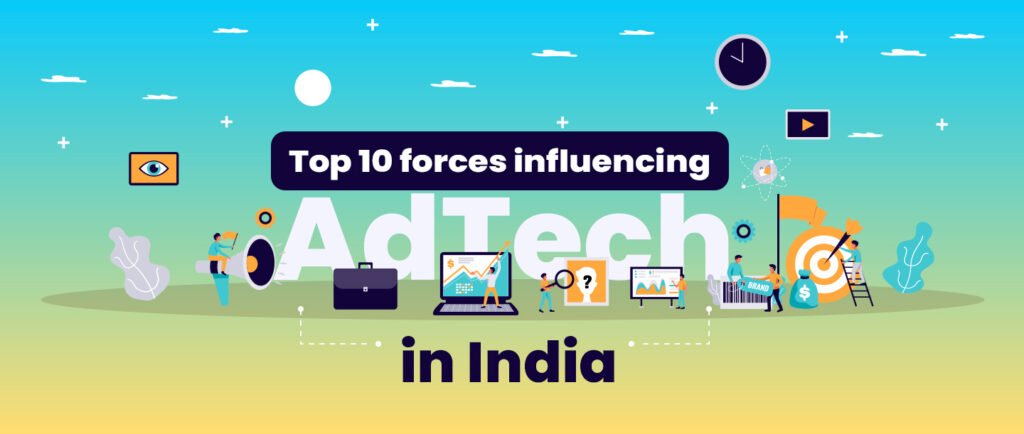Ad Networks That Publishers Must Follow
Advertising is one of the essential steps that are required to make a business successful. The evolution of the advertising techniques expanded its horizons over the course of time. Advertisement through publishers is one such technique. In 2023, businesses want to target their advertisements and place them in strategic locations. Your website could be one of those locations, allowing you to earn money while providing a platform for advertisers to promote their goods and services. With the help of ad networks, advertisers can manage their campaigns from a single location while running ads with multiple publishers using these online services. Defining Ad Network An ad network makes ad spaces available to the advertisers according to their requirements. It enables advertisers to connect with the publisher websites in the AdTech industry that are in the pursuit of advertisements to host. The websites that are related to the industry to which the advertisers belong or those which have an audience base that overlaps with the advertiser’s audience, make the best locations to put up the advertisements. An ad network centralizes all of the advertisements for the advertisers. This facilitates to have a comprehensive information that includes the location, target audience, performance metrics, etc. Publishers could view the revenue generated by their advertisements on their dashboard. Importance of Ad Networks In order to facilitate business transactions between publishers and advertisers, ad networks are used. They serve as a crucial component of monetization within the advertising ecosystem. Publishers would have to haggle over contracts with each independent advertiser if ad networks didn’t exist. Ad networks are also renowned for working quickly to sell leftover ad inventory. They basically segment the leftover inventory of publishers on the basis of demographics, and then sell the segmented impressions to advertisers who are specifically seeking similar impressions. This ensures that the publishers’ inventory reaches the appropriate advertiser on time. While on the subject of the importance of Ad Networks, it is crucial to note that 47.3% of websites across the globe use Google Ads as the primary ad network. While this share seems to be less than half of the general population, it should be noted that this figure also denotes a 98.5% market share in the Ad Network industry, way more than any other competitor around. 5 Best Ad Networks Publishers must follow in 2023 Google AdSense When we talk about the best Ad Networks, Google AdSense is the one which mostly tops the list. Google AdSense is the best way for publishers to list ads on their sites. It has become one of the top ad networks that connect publishers and advertisers in the web and mobile advertising space as a result of Google’s propensity to lead the way in the industry in which it operates. Every ad is screened by Google, which also offers significant customization options and makes the implementation process as simple. One of the helpful features that demonstrates your potential gains from adding AdSense to your stack is the earnings estimator. Amazon With the most extensive connections to SSPs, Amazon provides access to a diverse range of buyers through a single ad network. It is simple to set up and manage because Unified Ad Marketplace is connected through Google Ad Manager. There are two ways to access Amazon Publisher Services‘ expansive ad network: Unified Ad Marketplace Transparent Ad Marketplace. Small to midsize publishers generally use Unified Ad Marketplace, which can be accessed through Google Ad Manager. While larger or enterprise publishers can be invited to access Transparent Ad Marketplace. Adcash With more than 10,000 active campaigns worldwide, Adcash DSP+ is an online advertising platform that stretches its scope from web to mobile ad networks. Pop-under, push notifications, banners, native ads, and interstitials are just a few of the best-performing ad formats it offers for monetizing websites and mobile apps. They have a variety of features and tools that assist publishers in more efficiently monetizing their traffic. They provide publishers with high eCPMs, flexible payment terms, real-time statistics, and support. Publishers can also take help from their experienced, multilingual account managers to advance their monetization strategy. Adroll AdRoll, which focuses on eCommerce businesses, performs numerous marketing-related tasks for businesses that want to increase their product sales. On the publisher’s end, AdRoll excels at connecting you with advertisers eager to place every targeted ad impression that is most likely to result in a sale. Scale is the main advantage of AdRoll for publishers. By connecting with 70% of shoppers and producing over 1 billion ad placement recommendations daily, this ad network attracts premium brands, who pay premiums for ythe premium inventory. Epom Market Epom Market is a cross-platform advertising network that connects advertisers and publishers working across 15 verticals in more than 40 countries. It collaborates with publishers of all sizes and serves more than 13 billion ad impressions each month, assisting in the monetization of mobile apps and website content. With category-targeting for higher eCPM rates, Epom Market supports a variety of ad formats, including standard banner ads, video ads, in-text ads, and mobile-specific ad units. Customers who sign up for a 30-day trial with Epom Market can get up to 1 billion free impressions. Conclusion It is crucial for a publisher to be a part of ad networks to ensure the right ads are published on appropriate platforms expanding across geographies. And, to guarantee success of the advertising techniques, you need to find and include appropriate publishers to your network. Cubera not only enables you to do so but also considers the proper methods for approaching other networks of this nature in order to gain additional insights. Publishers now have a streamlined and refined revenue flow based on the inflow of advertisements on the desired locations; thanks to Cubera’s creation of Ad networks. If you are looking for a competent Ad Network to expand your horizons across various geographies, Cubera is the best place to start.








